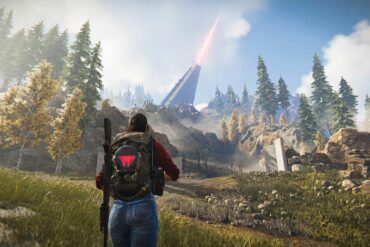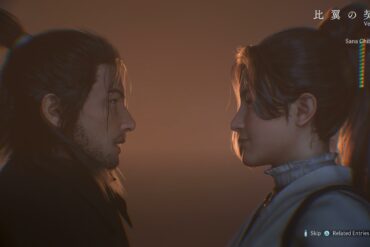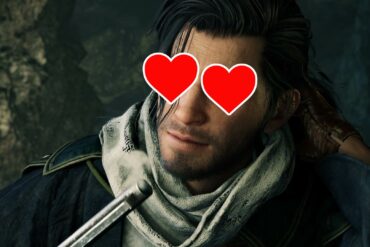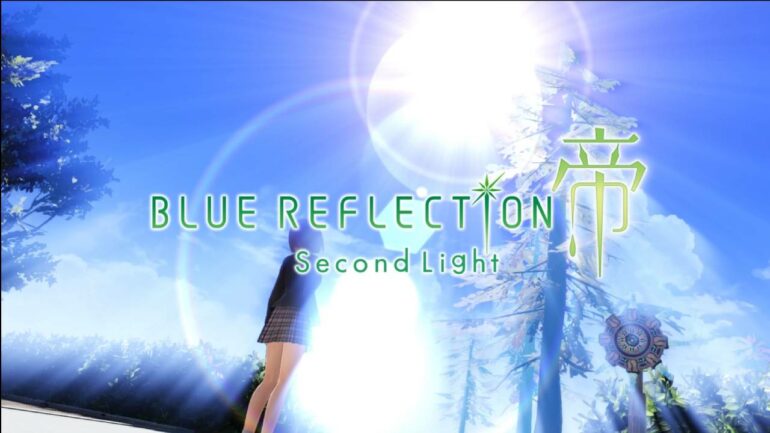When the original Blue Reflection launched back in 2017, my brothers joked it was the perfect game for me. It was a JRPG featuring an all-female magical girl cast that was about feeling your feelings. It felt like it was made for me. The gameplay was a culmination of perfected JRPG conventions that created a streamlined and complementary experience to the game’s narrative. Blue Reflection offered an alternative to the often-bombastic epic journeys that JRPG narratives usually follow, and instead had a much more relaxing pace earning itself the title of the ‘comfort JRPG’. When I first finished Blue Reflection I cried. Its beautiful and calming music soothed me after such an emotionally resonating final cutscene that firmly cemented the game in my top ten. This is why it’s such a shame that the game’s sequel, Blue Reflection: Second Light, falls short of the original.
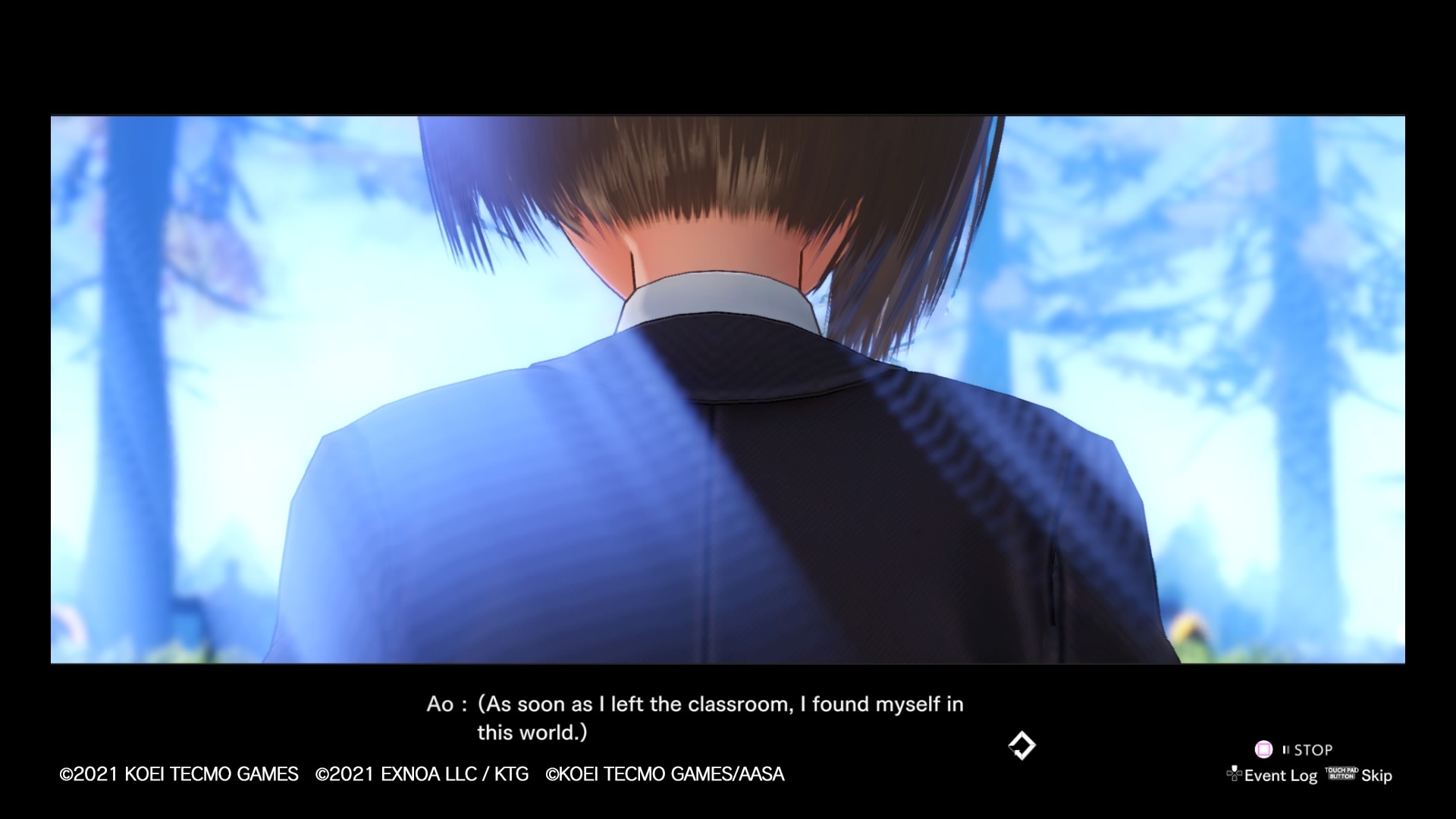
“Blue Reflection: Second Light’s story falls short in its characters which inevitably leaves it feeling less impactful than the original.”
Blue Reflection: Second Light follows the story of Ao Hoshizaki, who on her way to her remedial lesson suddenly awakes in another world. The new world is a school surrounded by an endless ocean inhabited by three girls who have lost their memories. As Ao arrives, so too does a new zone that none of the other girls have seen before. The new zone, called a ‘Heartscape’, is linked to discovering their old memories. Realising this, they begin to explore it and discover that they have magical powers.
The rest of Blue Reflection: Second Lights’ story is certainly heartfelt and explores a lot of interesting themes about identity and societal pressures on girls. However, it falls short in its characters and suffers from stunted pacing issues. This, therefore, leaves it feeling just slightly less impactful than the original.
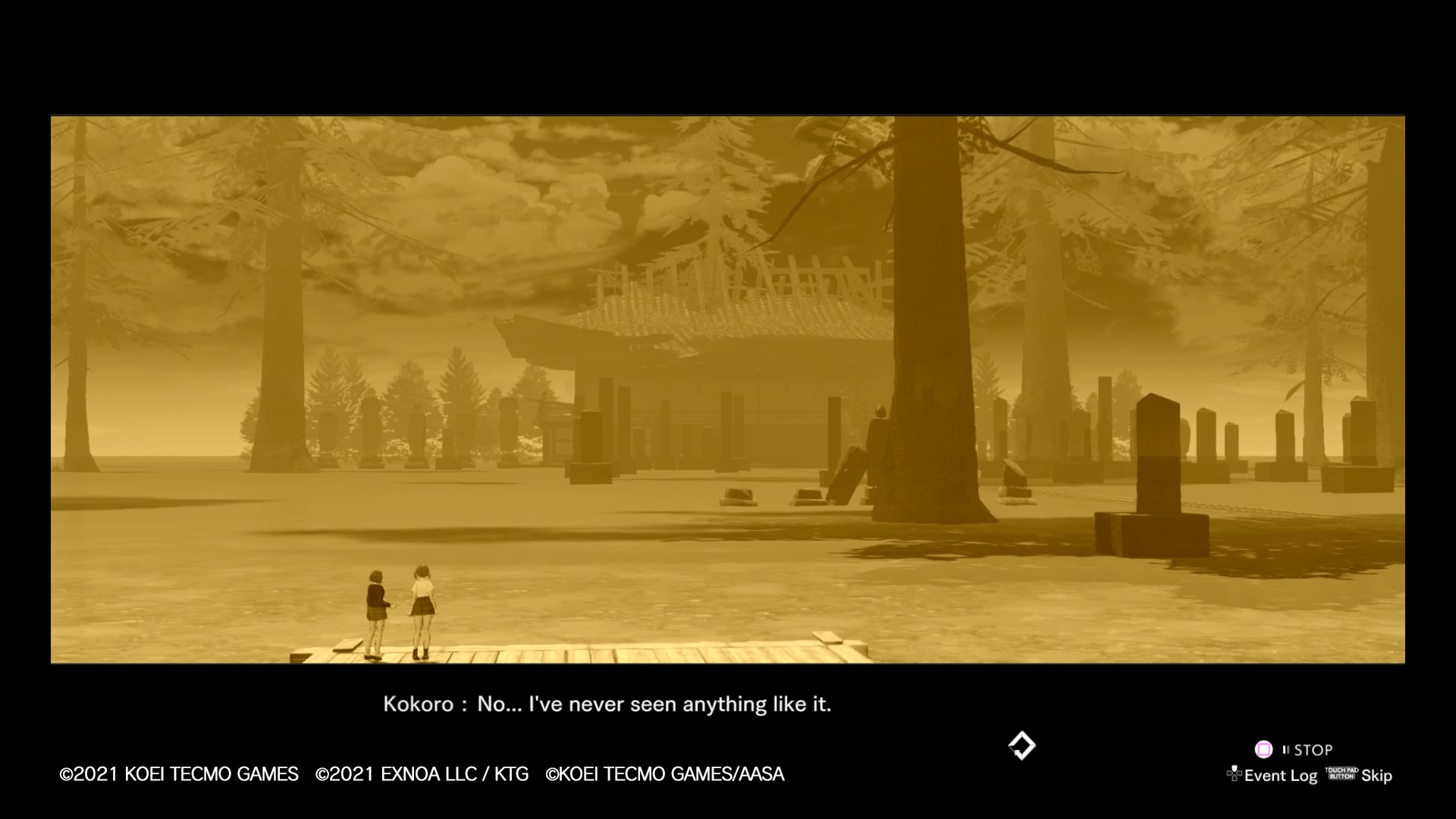
Blue Reflection: Second Light is surprisingly quick at setting everything up. It launches you straight into its gameplay systems and rapidly introduces several different characters without rhyme or reason. Unfortunately, this sense of urgency left me with a sort of detached feeling towards most of what was going on. I wouldn’t say you need to play the first game or watch the anime. However, I can see how newcomers to the series might get lost. It tends to gloss over a lot of its references to the original.
“The game often struggled with introducing new characters due to its already large cast.”
Fortunately, the game’s overall premise of everyone having lost their memories means that players can be eased into the development of each character without feeling too alienated. Essentially we learn about their characters and history alongside them. We grow with these characters as they remember key parts of their personality. While some of these are somewhat already expressed – such as Renas’ standoffish remarks – the fact that they are also explained as they regain their memories always felt rewarding to see.
However, as I played through Second Lights’ 20hr long story I couldn’t shake the feeling that the game desperately wanted me to get to like the characters as quickly as possible. The game often struggled with introducing new characters due to its already large cast.
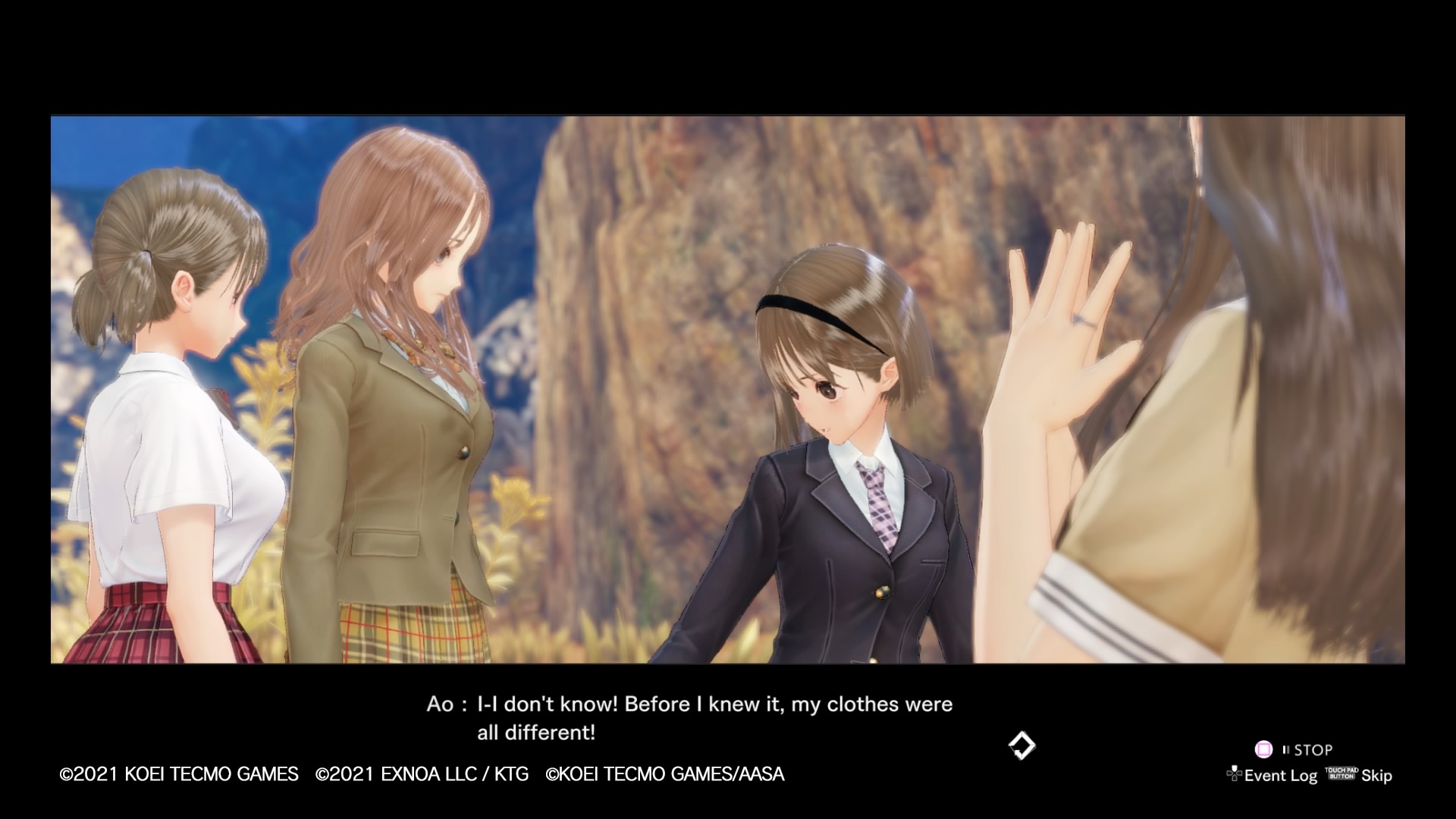
Whilst I enjoyed many of the new personalities, no one character grew out of their designated stereotype. More often than not they would get left behind. Too many of the girls, whilst adorable, felt like once their story was up they became nothing more than NPCs. The extra stories often come too late, with some moments of personal growth feeling like it should have happened hours ago or had already occurred. While the overall story is an improvement over the previous game, unfortunately, Blue Reflection: Second Light’s characters fell just a bit too short of the original’s cast.
“It ultimately ends up “gamifying” too many important elements, locking interesting or necessary moments behind what are ostensibly mini-games.”
Furthermore, in Blue Reflection: Second Light, interaction with the other characters primarily occurs during the date activity. This involves taking the girl of your choosing around the school before watching a story event play out. It’s a neat idea, but the clunky and at times unbearably slow movement and stiff animations often left me feeling somewhat closer to the characters but at the expense of slight frustration as I constantly bumped up against whoever was desperately trying to trail behind me.
In contrast, the original Blue Reflection had a linear approach to storytelling. This ultimately meant it had a very tight narrative and gameplay structure. This ensured that characters were developed and grew with one another at regular intervals. The story and characters remained consistent. While, for the most part, Blue Reflection never really extended its story beyond its fun combat and ‘monster of the week’ story pacing, it nevertheless allowed each character to have an equal amount of screen time.
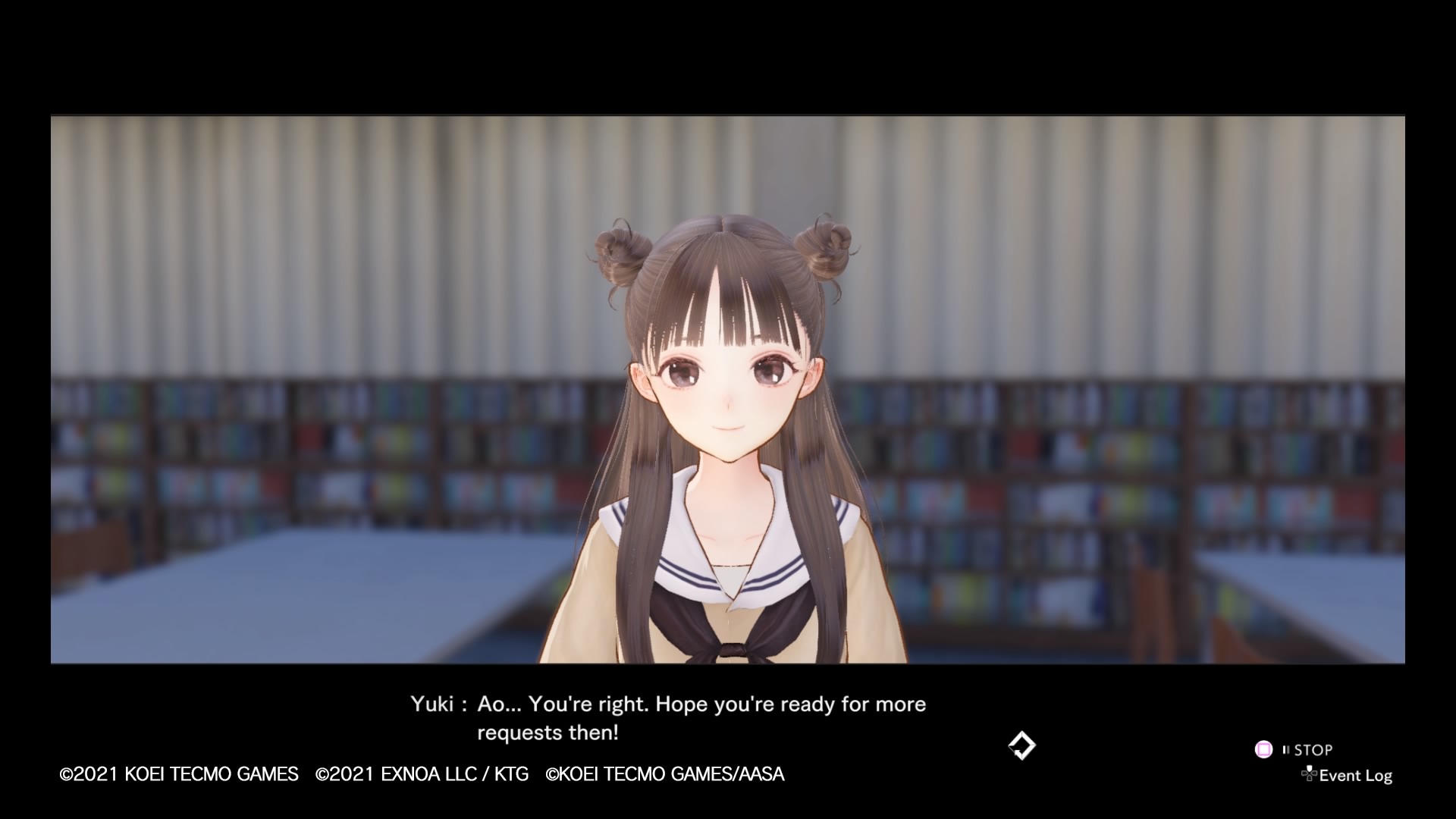
Unfortunately, the same cannot be said for Blue Reflection: Second Lights’ more non-linear approach. It ultimately ends up “gamifying” too many important elements, locking interesting or necessary moments behind what are ostensibly mini-games. By putting the majority of the character development into this dating system, it creates a separation between narrative and gameplay. This, therefore, results in a gameplay loop that feels like completing a bunch of busywork before going to a dungeon.
“While Blue Reflection: Second Light’s overall story was a lot more engaging than the original, it lost a lot of what made the original game more of an intimate experience.”
Blue Reflection: Second Light does offer an insightful look into the fear of responsibility, growing up, friendship and family issues. All of these themes are thoroughly welcome and I can imagine many female-identifying players will get a lot out of them. However, once each of these issues were introduced it felt as if the game glossed over them in order to get to the resolution quickly.
Blue Reflection’s tighter pacing offered a more prolonged look at each characters’ dilemma. This, therefore, made it feel more impactful once they reached their conclusions. It’s a shame the same can’t be said for Second Light.
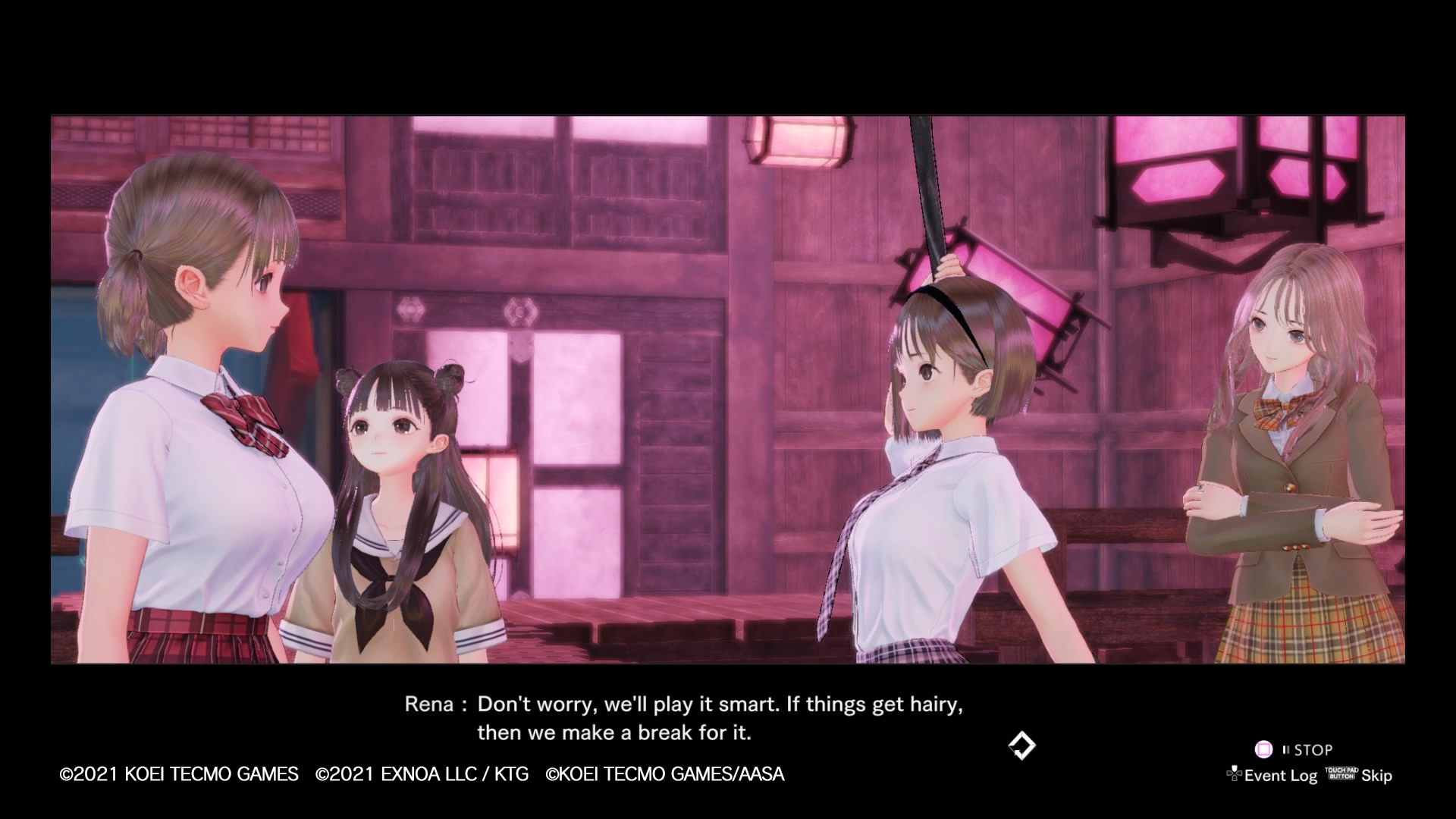
Additionally, Ao as a protagonist felt too rigid in her stereotype compared to Blue Reflection’s main character Hinako. Ultimately, while Blue Reflection: Second Light’s overall story was a lot more engaging than the original, it personally felt like it lost a lot of what made the original game more of an intimate experience.
“The most prominent new addition to Blue Reflection: Second Light is the school development system.”
When it comes to gameplay, Blue Reflection: Second Light introduces multiple new mechanics to broaden the game’s overall scope. These new mechanics thankfully never felt overwhelming despite their rapid-fire introduction. Unfortunately, this was mostly in part due to how underwhelming a lot of them are.
The most prominent new addition to Blue Reflection: Second Light is the school development system. Not only does it feel very exciting to play around with, but it’s even tied to story progression. This makes it feel a lot more impactful whenever you build a new faculty. Building a new faculty isn’t particularly hard either as you’ll usually already have a lot of the materials you need. However, the limited number of physical slots on the school grounds means you must think about what bonuses – a lot of which comes from having certain set combos – from the buildings you’d prefer to have.
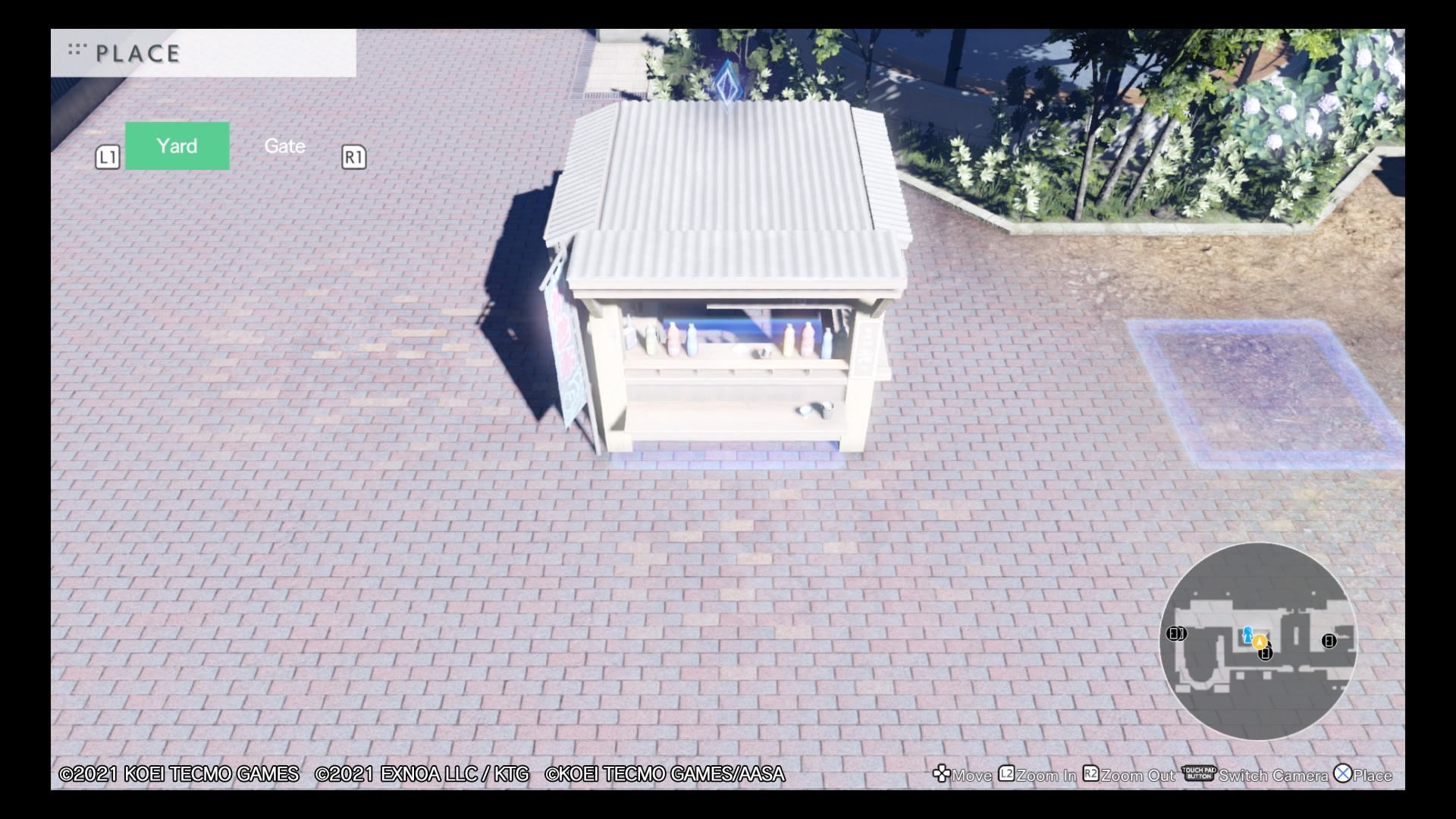
Crafting consumables for battle like in the previous game makes an appearance too. However, crafting now involves an extra step as it makes the player choose which girl will craft the item. Every one of them has various skills that can influence the completed items final effects. It’s a fun mechanic, and the cute animations that play out always helped make the slog through menus worth it. However, I couldn’t help but think that there should have been more freedom to it. The limiting space in which you can place various facilities didn’t make a lot of sense considering the school’s large environment. It just felt like a consequence of the game’s struggling engine rather than a conscious choice.
“While each dungeon looks stylistically different, when compared to even its own developer’s other titles, the game looks a little dated.”
Furthermore, dungeon exploration has had a few tweaks from the original game. In Blue Reflection, you would explore a dungeon in three stages, each of which looked the same. Blue Reflection: Second Light shares the same idea, but also includes a few extra mechanics to enhance the extremely straightforward design.
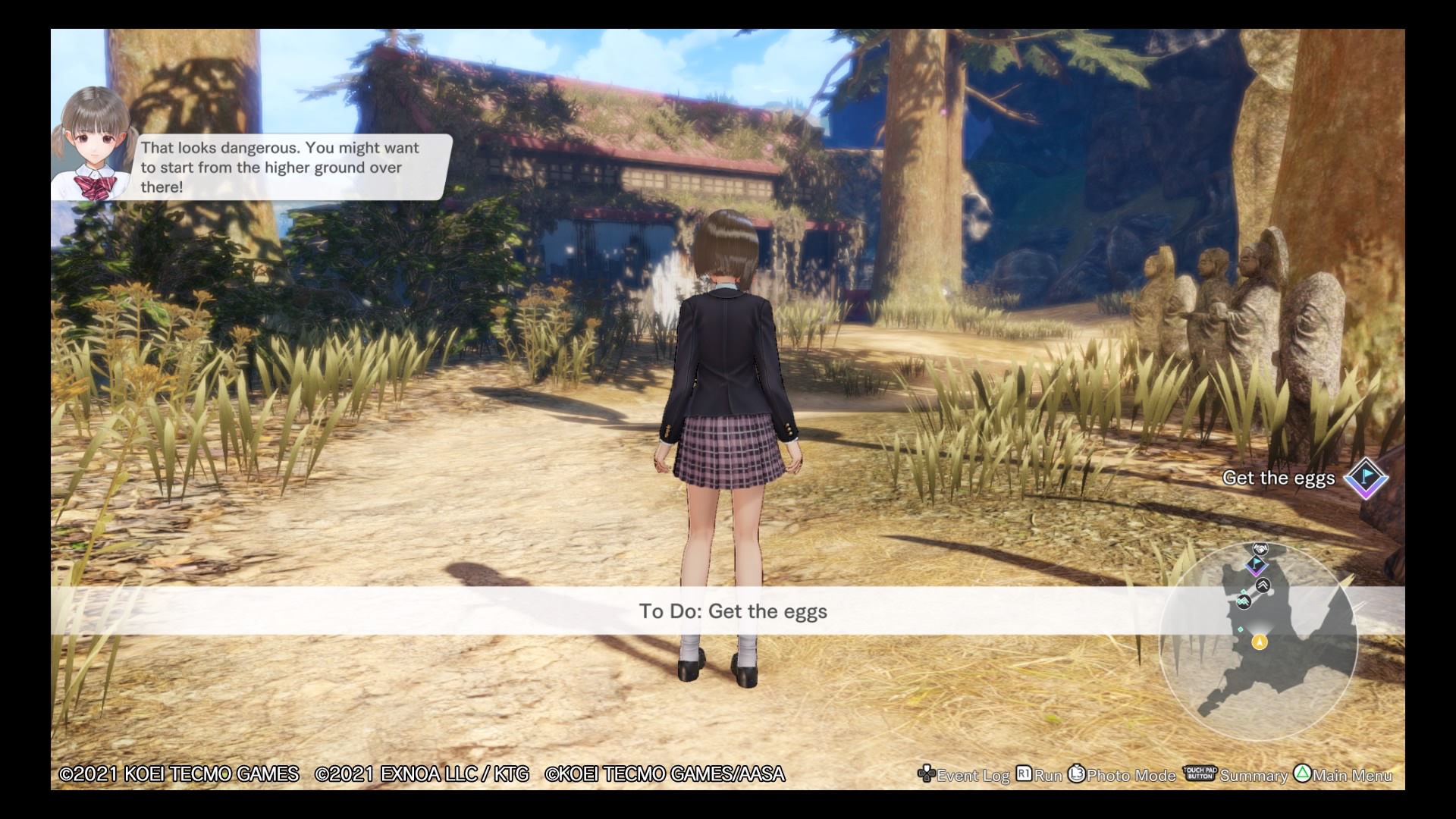
You run through each dungeon gathering items, beating up enemies and defeating the final boss. In doing so you will restore the dungeon’s corresponding characters’ memories. The environment design is what makes these dungeons stand out against its predecessor. It takes real-world elements such as train stations and drips them in a fantastical light. However, while each dungeon looks stylistically unique, when compared to even its own developer’s other titles, the game looks a little dated. On occasion, I felt it even looked graphically ugly due to the oversaturation of certain colours and excessive bloom.
“The game has an incredibly engrossing tug-of-war style combat system that kept me on my toes the entire time.”
Fortunately, combat is where Blue Reflection: Second Light truly shines. It features a new revamped version of Atelier Ryzas’ semi-real-time system. This is an extremely gripping system that makes every battle incredibly engaging. Additionally, unlike other aspects of Blue Reflection: Second Light, every new element that it introduces is explained clearly and each aspect felt manageable.
In combat, you control the entire party, plus one supporter, with each character being assigned a different button that moves along a timeline. You can store a character’s attack by not using it and instead wait until another character has moved up the timeline to unleash a combo. There’s a lot more to consider, such as the gear levels and ether points – which are essentially action points – that can be used independently or as a combo.
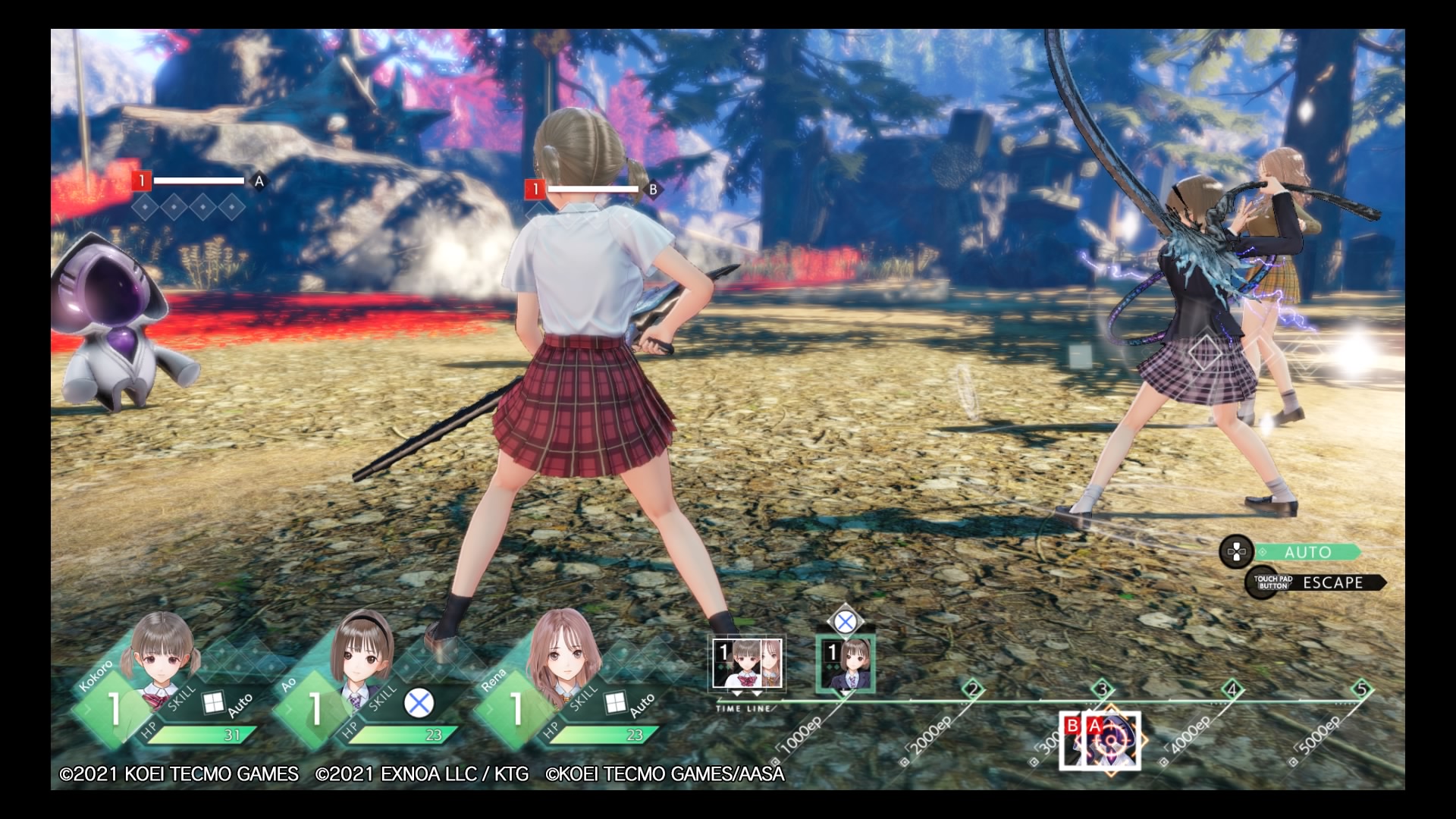
Each battle in Blue Reflection: Second Light feels simultaneously fast-paced and methodical. This prevents the game from feeling like you’re just repeating the same actions as is the case in most JRPGs. For the most part, this is largely due to the importance of combos. Successive attacks result in the combo meter building up, which once built up can lead to massive damage buffs. Enemies will attempt to reset this meter by using special attacks which the player can counter by using ‘combo-preserving’ abilities. This creates an incredibly engrossing tug-of-war style combat system that kept me on my toes the entire time.
“One-on-Ones felt awkward due to the enemies often poor-quality animations as well as how brief these moments were.”
Additionally, there is the ‘One-on-One’ mechanic which is activated by players exploiting boss weaknesses and mastering the combat system. In this mode, one character will go up against the boss alone with a set amount of moves. They must use them all before the timer runs out. Players can choose to dodge, counter, or use an attack before unleashing their finisher or getting totally decimated themselves. Depending on who won, a massive amount of damage will be dealt before the battle resumes normally.
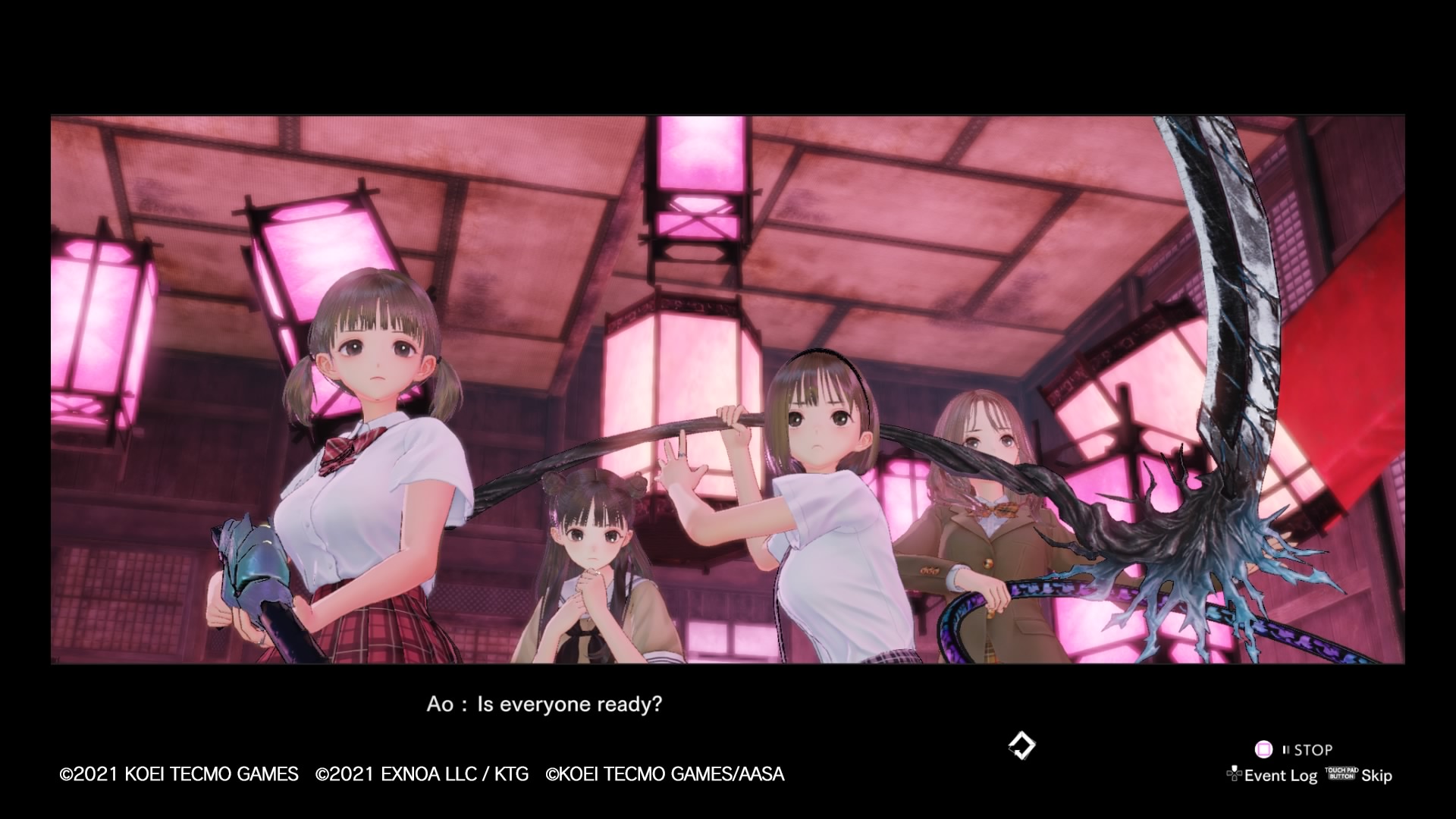
One-on-Ones felt awkward due to the enemies often poor-quality animations as well as how brief these moments were. They were often far more confusing than fun and were over as quickly as they started. You also can’t choose who stars in this mode either. This means that, due to the games’ heavy emphasis on combos and timing, One-on-Ones more often than not would destroy the long-set up of combos I had planned. This tended to result in my party being easily wiped out if I was not careful, even on lower difficulties.
“The stealth sections were annoying at best and unforgivably irritating at worst.”
Lastly Second Light introduces a stealth mode. This can be activated at any time during exploration and is often used for certain side and main quests. In theory, this mode is meant to be used for either sneaking by enemies or for backstabbing them. Backstabbing enemies is incredibly helpful too as if an enemy is struck from behind it will grant players a higher place on the timeline at the start of combat.
Unfortunately, the stealth mode is not only boring but horribly, horribly broken. In stealth mode, you move slower but can see – in theory – the enemy’s line of sight. I think the idea was for players to use this mode to observe enemies and sneak around them. However, the corridor-esque dungeon design in addition to the large number of enemies on each map meant I almost always ran into one anyway.
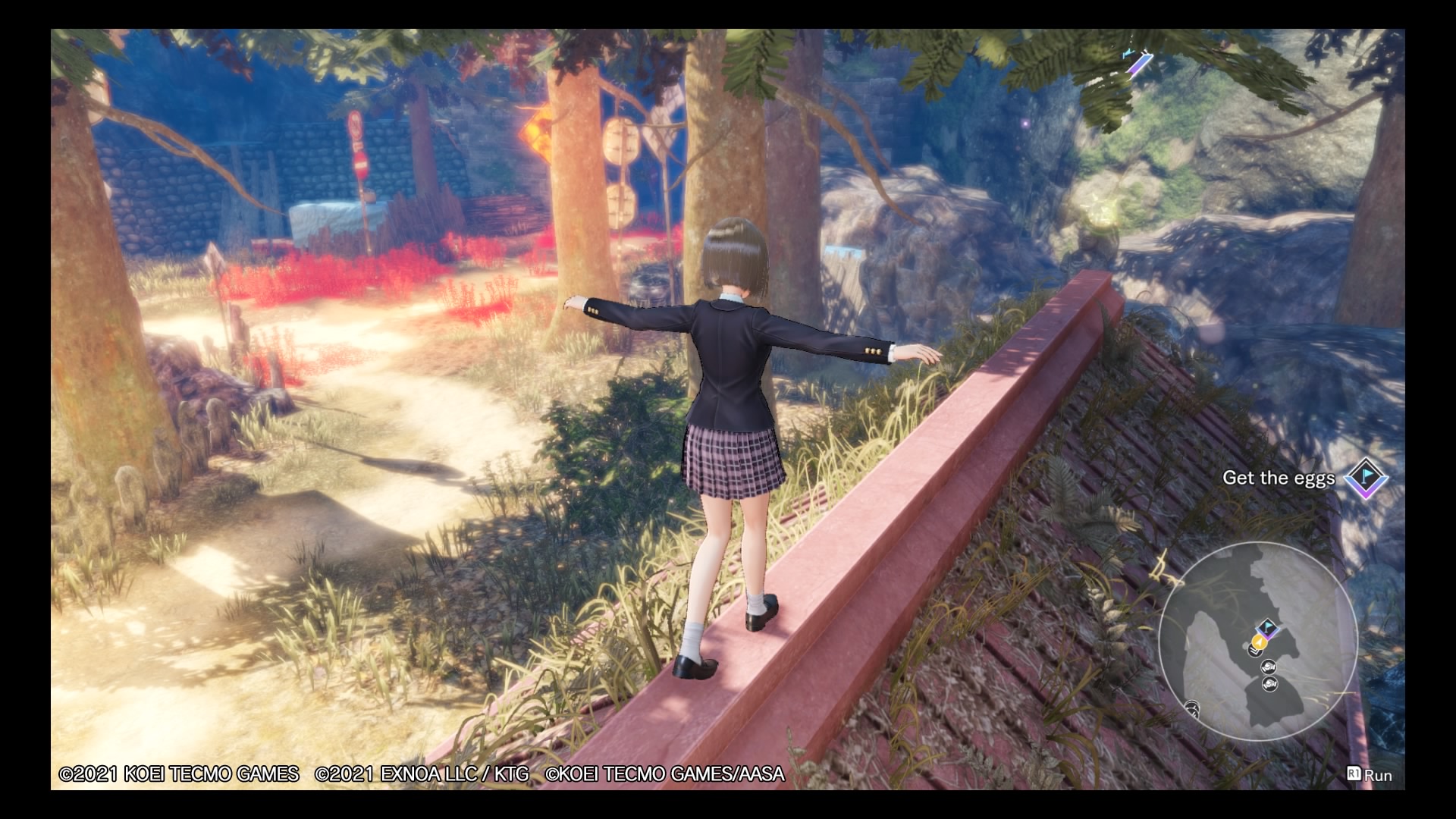
There’s no indication if enemies can see you through cover – which they almost always do – or if height is a factor. It also doesn’t explain whether or not the enemy has a set path as seemingly many did and many didn’t. Failing the more important stealth sections can have serious setbacks thanks to the game’s sparse checkpoints. This, combined with the unpredictable enemy patterns meant these sections were annoying at best and unforgivably irritating at worst.
“While the character models look decent enough, they suffer from too many texture and animation issues.”
Unfortunately, while Blue Reflection: Second Light features some excellent combat and great narrative beats, it is a mess technically. For the most part, Blue Reflection: Second Light ran very well on my ps4 with nearly nonexistent loading screens. However, no amount of quick loading screens can mitigate the fact that this game looks very outdated. The original Blue Reflection already looked dated for 2017 when it launched. However, somehow its sequel’s graphics fare far worse.
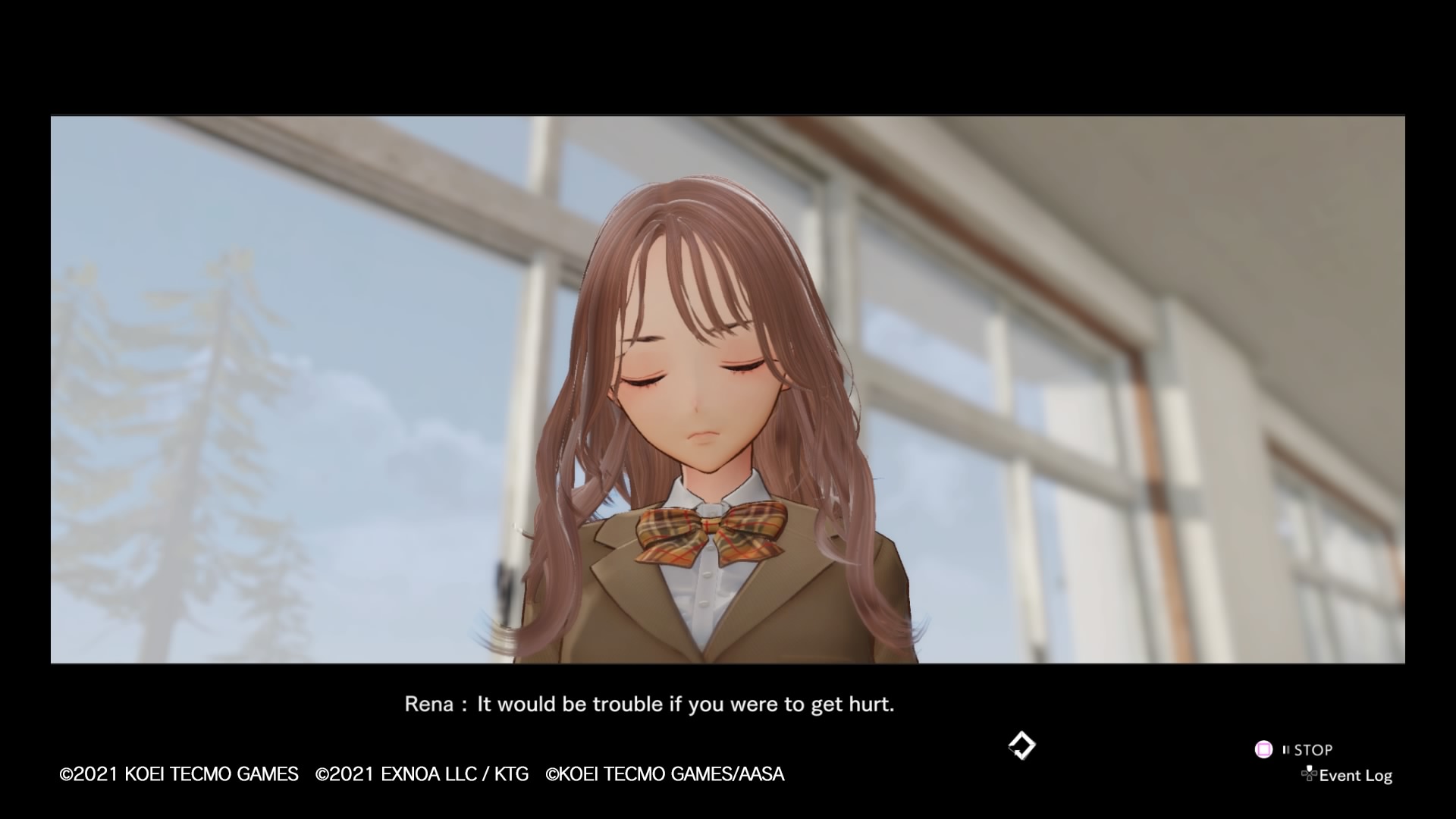
While the character models and new facial expressions look decent enough, they, unfortunately, suffer from too many texture and animation issues. For example, some of the character’s eyes bleed into their face due to having indistinguishable textures from the colour of their skin. They also have extremely rigid and reused animations that make a lot of the girls look like dolls. There were also multiple instances of shadows and textures being distorted by the game’s struggling lighting engine. It left many characters looking discoloured or washed out whilst the background could look extremely stark.
“Every technical and graphical issue really makes Blue Reflection: Second Light feel extremely outdated despite it releasing this month.”
As aforementioned, the excessive bloom left dungeons looking ugly. It is a genuinely massive shame considering how gorgeous the environment design could be. Additionally, too many animations and enemies are reused from the previous game. It is incredibly disappointing as they did bother to make some new enemies and animations.
To make matters worse, while I didn’t encounter too many glitches there were enough that I noticed them while playing. Fortunately, they never extended beyond Ao getting stuck in item locations when trying to pick them up or daytime events triggering at night. They never broke my immersion but were enough to be consistently annoying.
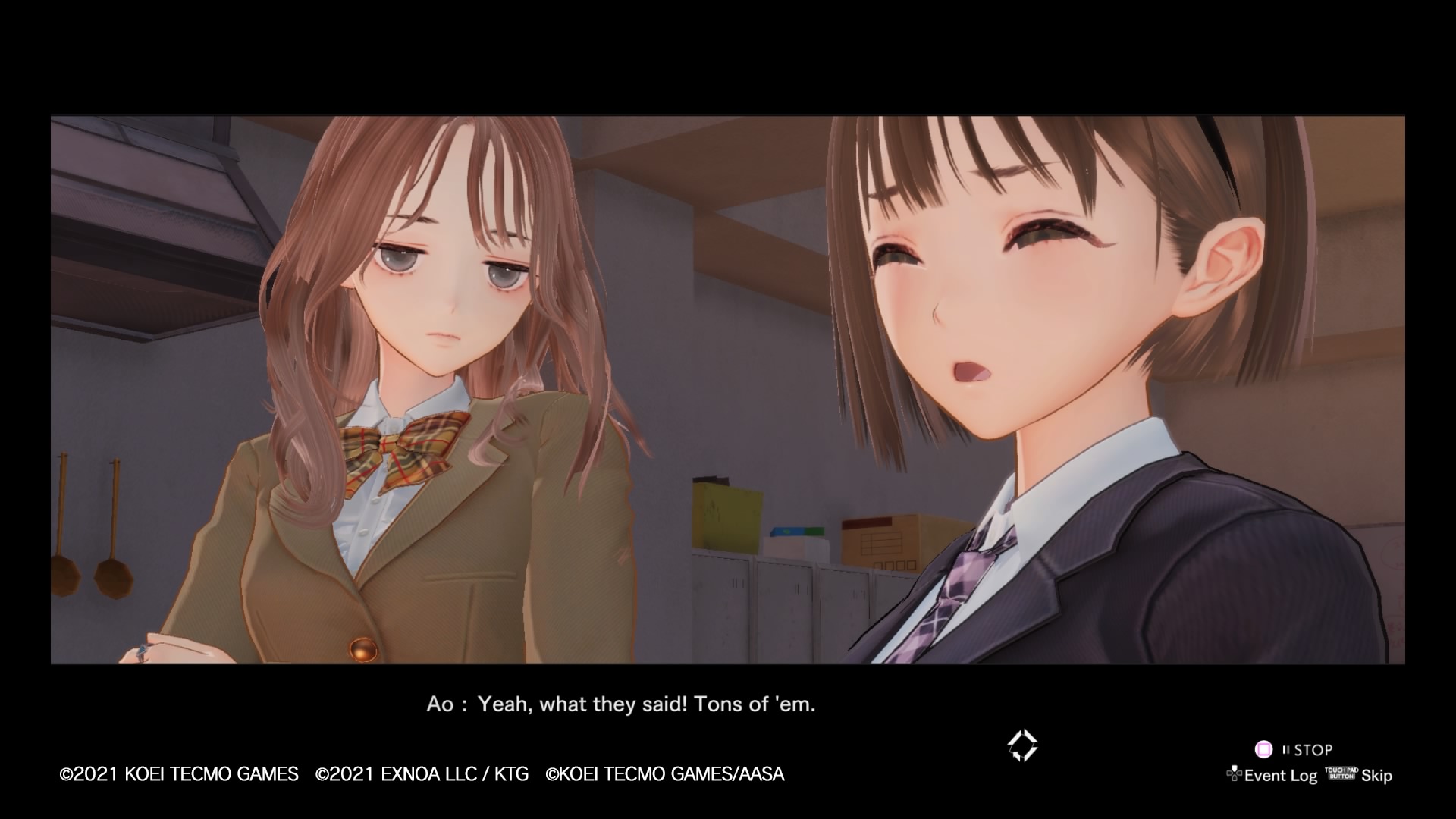
Finally, as constantly criticising a game’s technical faults can get exhausting, I felt uncomfortable by the games need to over sexualise many of its underage characters. Many of the character models had comically oversized body proportions. Some of the lecherous camera angles would suggest that the game does not seem to treat its own characters with the respect they deserve. It is unfortunate as the game is about female anxieties and the struggle of self-acceptance. This, coupled with every other technical and graphical issue really makes Blue Reflection: Second Light feel extremely outdated despite it releasing this month.
“Blue Reflection: Second Light felt like a middling experience that I probably won’t revisit for some time.”
Fortunately, Blue Reflection: Second Light’s music mostly retains the same quality of the phenomenal soundtrack by Hayato Asano from the original. In the original game, the soundtrack was almost god-tier, with every track feeling as memorable as the next. A lot of the original game’s soundtrack makes an appearance in this one too. This is hugely beneficial as both games share similar motifs that are perfectly expressed in the music. However, the most memorable tracks in Blue Reflection: Second Light are basically from the first games. The new battle themes feel a lot more generic and underwhelming despite being by the same composer.
Blue Reflection: Second Light overall feels like a competent JRPG that many newcomers to the series and genre will no doubt prefer over the original. Its newer mechanics and more streamlined combat system make it a far more approachable title that I can see finding a home with a much more casual base of players who prefer comfy games.
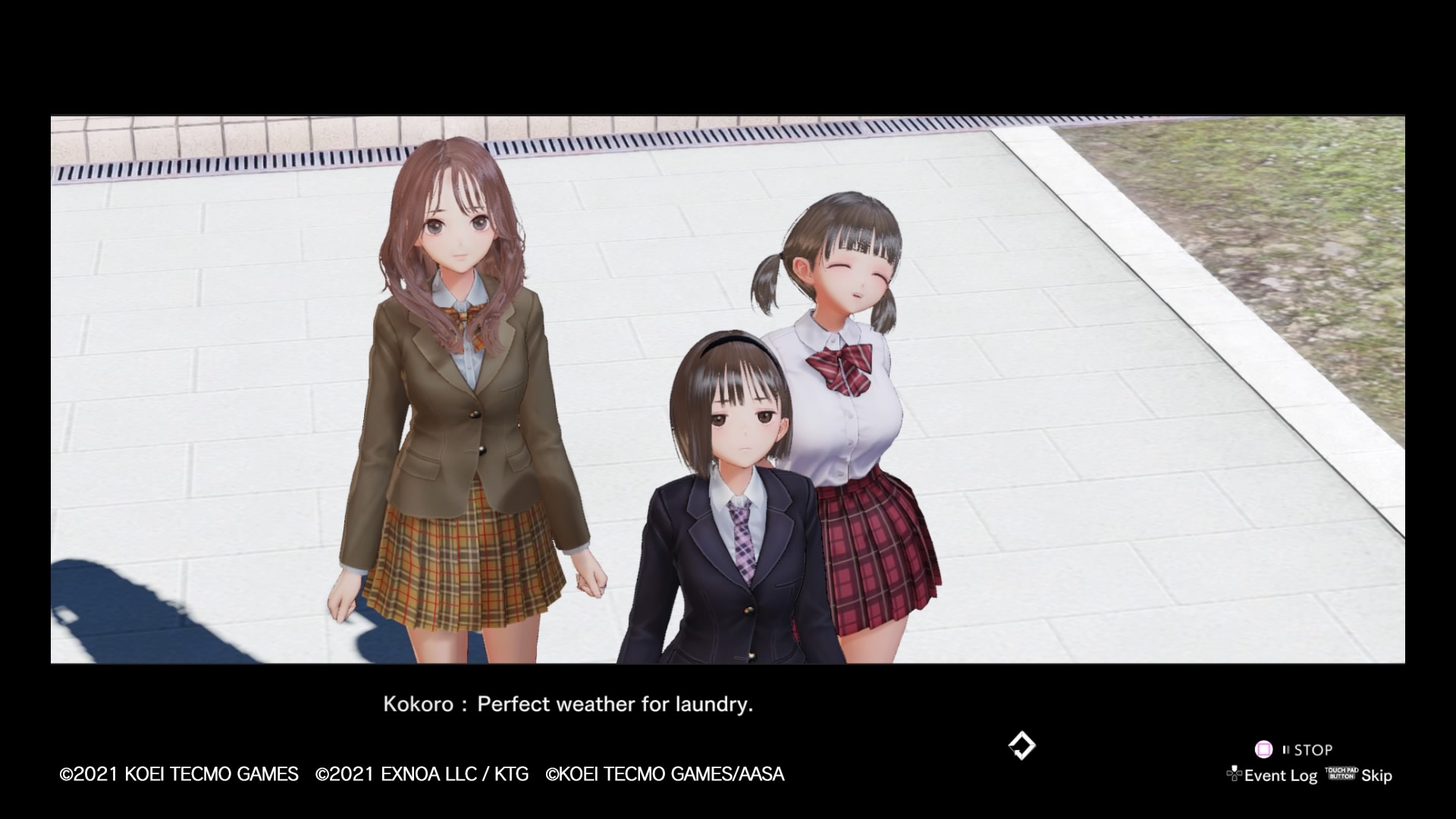
However, its ‘slice of life’ story and well-structured but never demanding gameplay won’t really appeal to hardcore JRPG fans who prefer more mechanically in-depth experiences. While Blue Reflection: Second Light was a fun time that was enhanced by my love of the original, the constant technical issues and dated engine left it feeling like a middling experience and probably one I won’t revisit for some time.
Check out Blue Reflection: Second Light on PlayStation 4 here.
*Disclaimer: Reviewed on PlayStation 4, code was provided by the Publisher.


